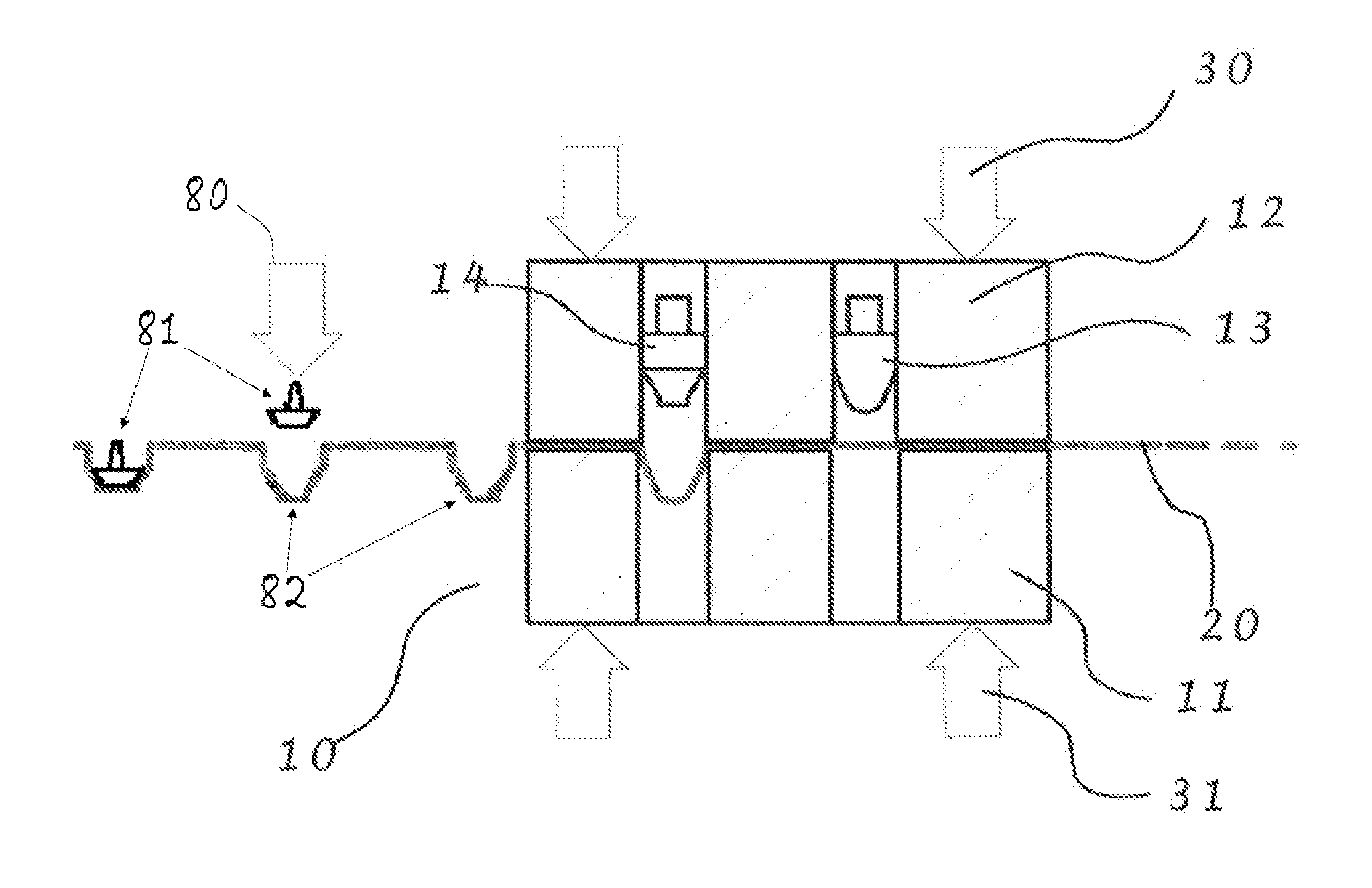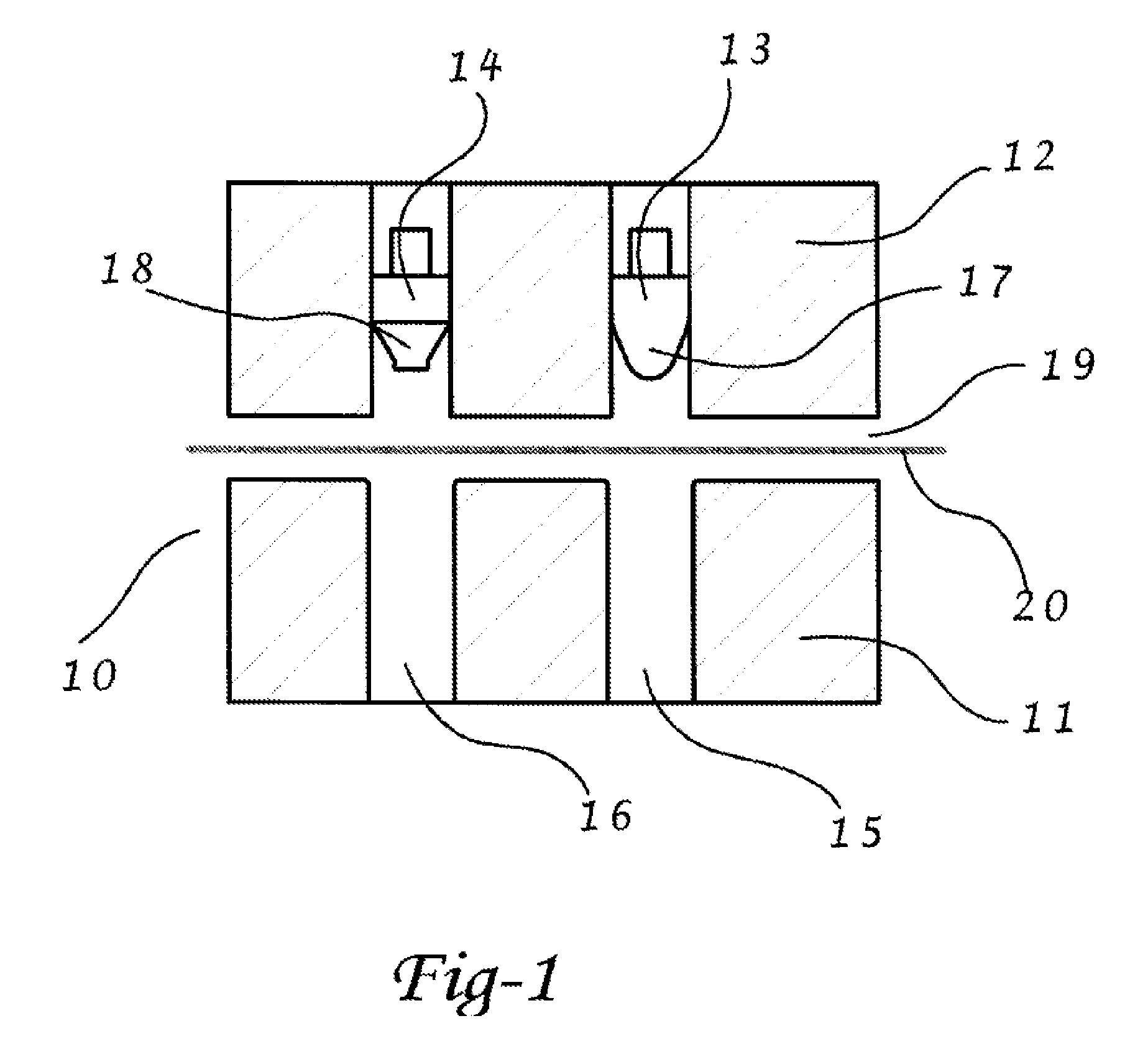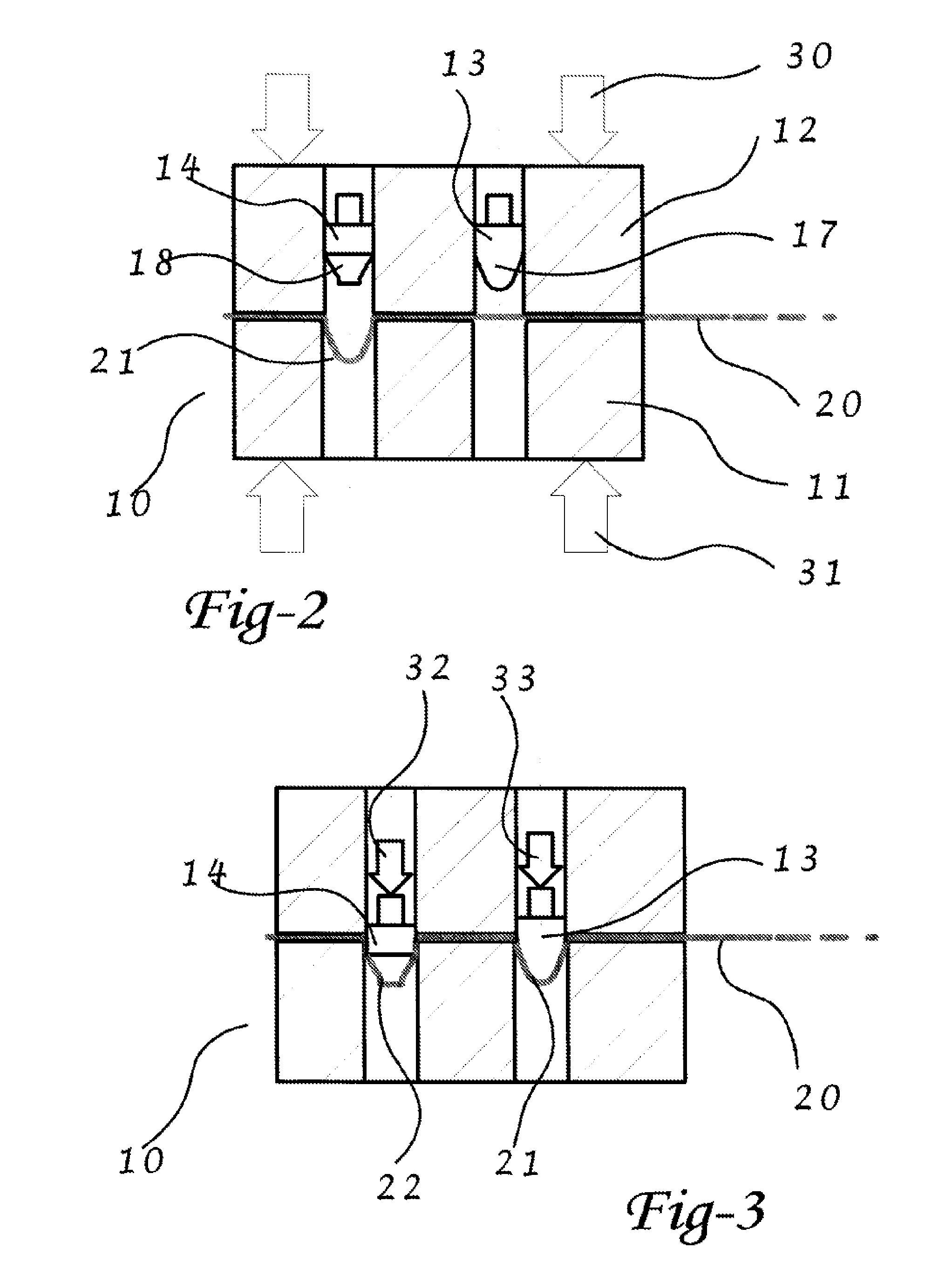Deep Draw Container Forming Method
a container and deep draw technology, applied in the field of container forming, can solve the problems of insufficiently addressing the difficulties of current processes for forming blisters, compounding limitations, and forming blisters from metal-plastic foils, so as to reduce the likelihood of thin spots, reduce delamination, and reduce the likelihood of fractur
- Summary
- Abstract
- Description
- Claims
- Application Information
AI Technical Summary
Benefits of technology
Problems solved by technology
Method used
Image
Examples
Embodiment Construction
The present disclosure is directed to processes for manufacturing shaped articles such as shaped structures, containers, packaging, or blisters, suitable for unit-dose packaging. One purpose of the forming process is to produce a formed recess, such as a blister, suitable for holding pharmaceutical products, foodstuffs, luxury consumables, diagnostic agents, combustion agents and technical articles. The pharmaceutical products may include but are not limited to medication, ampoules, pills, capsules, tablets, lozenges, dragees, suppositories, fast-dissolving dosage forms (e.g., freeze-dried dosage forms, lyophilized dosage forms), molded devices, and the like, which can then be sealed by the application of a coating such as a lidding over the opening of the formed recess. In particular, the disclosure is directed to manufacturing blister packages, for example for packaging pharmaceutical products. When the unit dose is a pharmaceutical product, the unit dose is typically the amount o...
PUM
 Login to View More
Login to View More Abstract
Description
Claims
Application Information
 Login to View More
Login to View More - R&D
- Intellectual Property
- Life Sciences
- Materials
- Tech Scout
- Unparalleled Data Quality
- Higher Quality Content
- 60% Fewer Hallucinations
Browse by: Latest US Patents, China's latest patents, Technical Efficacy Thesaurus, Application Domain, Technology Topic, Popular Technical Reports.
© 2025 PatSnap. All rights reserved.Legal|Privacy policy|Modern Slavery Act Transparency Statement|Sitemap|About US| Contact US: help@patsnap.com



